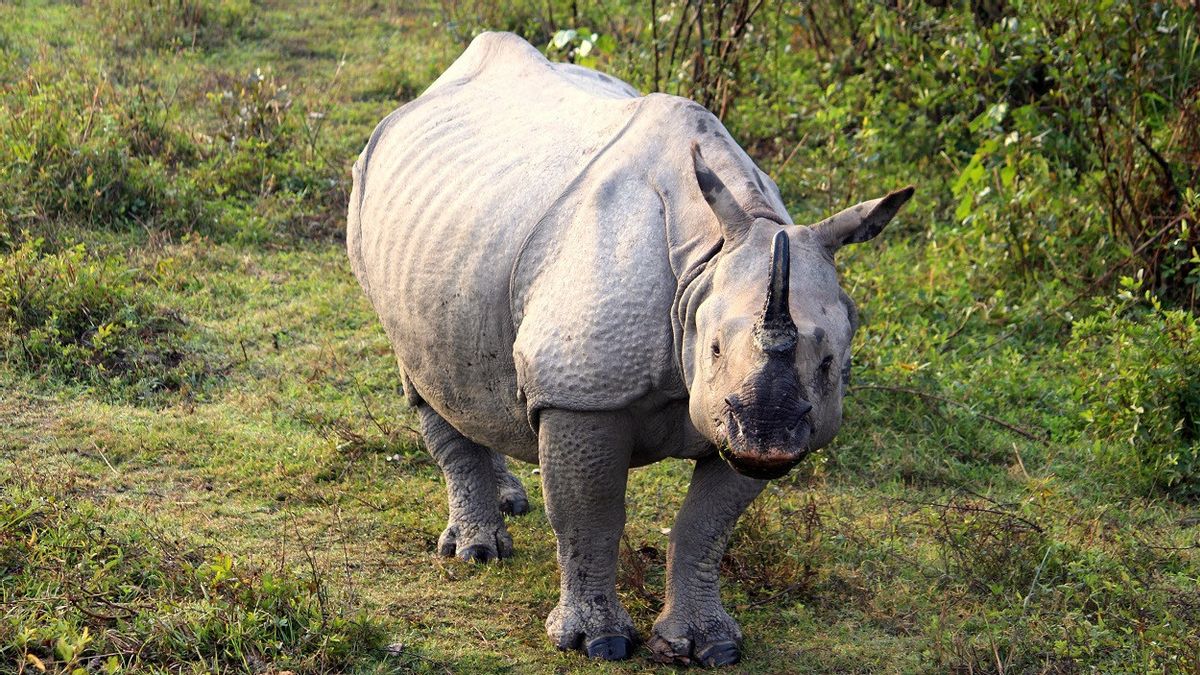JAKARTA - India's one-horned rhino population has grown to 200 over the past four years, according to a new local government survey of the once endangered species.
The survey was conducted last week in Kaziranga National Park in northeastern Assam State, a UNESCO World Heritage Site and one of the world's last natural habitats for the rare rhinoceros.
The Indian-horned rhinoceros is the largest of the rhino species and has faced the brunt of hunting for decades, eyeing its horns, which are made of keratin, an important ingredient in traditional Chinese medicine.
But at the end of March, park officials said 2,613 rhinos live in protected zones spread over an area of 430 square kilometers. About 275 of them are children and 146 young rhinos.
"Population growth is within the limits of normal growth rates and population patterns. Kaziranga have decent conditions for their habitation and growth. The park has a very dynamic ecosystem," Ramesh Gogoi, the division's forestry officer, told The National News as quoted by 9 April
A total of 64 enumerators mounted on 50 elephants and more than 250 field staff were involved in the census which was previously conducted every six years, but will now be conducted every four years, Gogoi said.
More than a dozen independent observers are part of a program that looks at the extensive use of technologies such as drones, binoculars and GPS.

The 2018 census found 2,413 rhinos, but since then a series of devastating floods in the state left at least 400 of them dead, according to several Indian media reports.
The park is located on the floodplain of the Brahmaputra River, frequently inundated during the annual rainy season which has increased in recent years, due to climate change.
Authorities have built high mud platforms throughout the park to allow the rhinos to take shelter during flooding, a move that experts say helped the animals survive the natural disaster that has become the rare animal's biggest killer after poaching.
It is known that this mammal was declared an endangered species in 1975, after its number dropped to several hundred.
But over the decades, the rhino population has thrived in the park with the efforts of dedicated conservationists and rangers, some of whom are armed with AK-47 rifles.
Their status was lowered from endangered to vulnerable on the 2008 red list of calves.
Only adult males have horns that can reach 10 inches and weigh three kilograms. The animals use horns to protect their calves, dig water and defend territory.
While the horns are made of keratin like horse hooves or human hooves, they are widely smuggled in because they are believed to have medicinal and aphrodisiac properties. The horn, a tight lock of hair, has also become a status symbol in Vietnam.
Last September, the Government of Assam burned nearly 2,500 horns to commemorate World Rhino Day, with the aim of dispelling myths related to rhino horn.
For information, poaching cases have decreased by 86 percent in national parks, from 12 cases in 2016 to one case in 2021, the lowest in two decades. One rhino was killed by poachers in January this year.
The English, Chinese, Japanese, Arabic, and French versions are automatically generated by the AI. So there may still be inaccuracies in translating, please always see Indonesian as our main language. (system supported by DigitalSiber.id)













